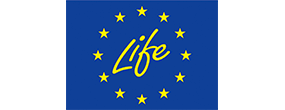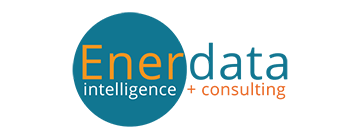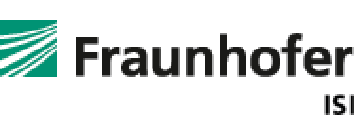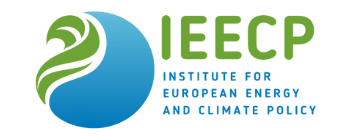Overview
The final energy consumption (climate corrected) of Slovenia increased by 4% (+0.20 Mtoe) or 0.2%/year in the period 2000-2022. The largest increase was between 2000 and 2008, by 19% (0.88 Mtoe), followed by a period (2008-2022) where energy consumption decreased due to the economic crisis (2009) and later Covid (2020). The variation in total final energy consumption was -8.9% in 2020, +5.8% in 2021 and 1.2% in 2022. In the observed period (2000-2022), transport had the highest increase in energy consumption, by 63% (0.76 Mtoe), while the energy consumption decreased in the other sectors: by 17% (-0.25 Mtoe) in industry, by 16.9% (-0.21 Mtoe) for households (with climatic correction) and in services by 16.6% (-0.1 Mtoe).
Figure 1: Final energy consumption by sector (with climatic corrections)
Source: ODYSSEEEnergy efficiency for total final consumers, as measured by technical energy efficiency index “ODEX”, improved by an average of 1.9%/year over the period from 2000 to 2022 or 34% for the whole period. Energy efficiency improvement in industry reached 2.0%/year (or 36% in total) but the largest improvement took place in the households sector (2.5%/year or 41%). Transport (excluding international air transport) was the sector with the lowest energy efficiency improvement (1.3%/year or 25%). Efficiency improvement measured in the service sector (50% or 3.1%/year) must be considered with caution, since data before 2022 are not very reliable..
Figure 2: Technical Energy Efficiency Index
Source: ODYSSEEThe target of National Energy Efficiency Action Plans (NEEAPs) was to limit final energy consumption below 5.12 Mtoe and primary energy consumption below 7.125 Mtoe in 2020. Slovenian The new National Energy and Climate Plan (NECP) was adopted by the Government in December 2024, setting targets for 2030. One of the key objectives of the Slovenian NECP is to ensure the systematic implementation of adopted energy efficiency policies and measures so that the total final energy consumption in Slovenia should not exceed 4.32 Mtoe (50.2 TWh) by 2030.
Slovenian government adopted in 2020 the Energy Efficiency Act (ZURE) that regulates the areas previously regulated by the Energy Act (EZ-1) and aligns the country with the new rules of the European Union. The Energy Efficiency Act contains measures to improve energy efficiency in order to achieve the goals of the energy efficiency policy in all sectors.
Table 1: Sample of cross-cutting measures
| Measures | NECP measures | Description | Expected savings, impact evaluation | More information available |
|---|---|---|---|---|
| Act on Energy Efficiency (ZURE) | Yes | The Act on Energy Efficiency (ZURE) regulates areas previously covered in the Energy Act (EZ-1) and brings the country in line with the new European Union rules. ZURE contains measures for energy efficiency improvement for all sectors. The Act on Energy Efficiency (ZURE) includes energy services and essential measures for improving energy efficiency to achieve energy savings targets. | High | Link |
| Long-term energy renovation strategy of buildings until 2050 | Yes | The long-term energy renovation strategy for 2050 (DSEPS 2050) defines the approaches and policies for decarbonising the national building fund by 2050 and identifies measures supporting the building headline targets set in the National Energy and Climate Plan of the Republic of Slovenia (NECP). | High | Link |
Buildings
In the residential sector, the unit consumption for space heating, measured in energy per square meter of floor area of the housing stock, decreased by 2.5%/year on average between 2000 and 2022 (-43% for the whole period). This decline in specific energy consumption for heating can be attributed to the enhancement of building performance through the implementation of various measures. Among these measures, subsidies from the public fund Ecofund for additional insulation of buildings, replacement of building furniture, and replacement of heating appliances stand out as the most significant contributors.
Figure 3: Energy consumption of household space heating per m2 (with climatic corrections)
Source: ODYSSEE; ambient heat included.Figure 4: Energy consumption per dwelling by end-use (except space heating)
Source: ODYSSEEThe energy consumption of households in 2022 was 16 % lower than in 2000 in without climatic corrections . Over the period, increase in the number and size of dwellings and in the number of appliances contributed to raise of energy consumption by 0.31 Mtoe. At the same time, energy efficiency improvements enabled energy savings to overpass the increasing effects (-0.63 Mtoe). Improved energy efficiency is due to improved technical performance of buildings and appliances and also behavioural changes. Climate in 2022 was very similar to 2000, as the climate effect is only 0.03 Mtoe. Also the effect of increase in number of appliances per dwelling is very small (0,02 Mte). Other factors increased energy consumption by 0.08 Mtoe: they mainly correspond to the increased consumption of ambient heat from heat pumps that raised consumption by 0.06 Mtoe and also to some behavioural changes.
Figure 5: Main drivers of the energy consumption variation in households
Source: ODYSSEE; ambient heat included.In the service sector, the consumption per employee was quite volatile before 2008. After 2008, it has been rather constant until 2018 with a downward trend since then. However, we have to be prudent with the conclusions about energy consumption trends in this sector since the data on energy consumption is calculated as a residual. For electricity effect of COVID can clearly be seen. From 2022 onward data on energy consumption in the service sector is collected through survey, so quality of the data is much better.
Figure 6: Energy and electricity consumption per employee in services (with climatic corrections)
Source: ODYSSEEMeasures from the NEEAP were upgraded in the NECP and especially in the long-term renovation strategy. Subsidies and soft loans are available for private homeowners who wish to improve the energy performance of their homes through better insulation, installation of heat recovery ventilation and investment in renewable energy sources. Special attention is given to multifamily houses, by the preparation of new instruments to gain consensus for renovation, by subsidizing renovation for socially vulnerable people at 100% and by setting up guaranty scheme. Construction of new very efficient houses and flats is also subsidised. Building Regulations set statutory minimum energy performance requirements for new buildings and substantial changes in existing buildings are in place. Regulation has been tightened in 2022. Financial programmes for energy renovation of buildings in public sector are in place and combined with energy contracting schemes. Energy management is being setup in public sector. The NECP sets the goal to reduce energy use in buildings by at least 20% in 2030 compared to 2005.
Table 2: Sample of policies and measures implemented in the building sector
| Measures | NECP measures | Description | Expected savings, impact evaluation | More information available |
|---|---|---|---|---|
| Financial Incentives for Energy Efficiency and the Use of RES in Residential Buildings | Yes | The measure consists of financial incentives and other activities (regulation, organization,promotion..), to increase energy efficiency and the use of renewable resources in residential buildings | High | Link |
| Rules on efficient use of energy in buildings 2022 | Yes | Rules defines the technical requirements, which have to be implemented for energy efficiency in buildings in the area of thermal insulation, heating, cooling, ventilation or their combination, preparation of hot water and lighting in buildings, providing own RES for operation systems in the building | High | Link |
| Scheme of energy efficiency for low-income households | Yes | The first scheme was prepared in 2009 for a subsidy to low-income households for the energy rehabilitation of older multi-apartment buildings in which a larger number of lower-income households reside. The financial subsidy is intended to enable the implementation of low investment measures to reduce energy costs and increase living comfort. | Medium | Link |
| The establishment of the guarantee scheme | Yes | Establishing a state guarantee scheme that would enable apartment owners in multi-apartment buildings who do not have sufficient funds to implement energy efficiency measures, to take out a loan at a commercial bank that would be secured with a state guarantee. | Medium | Link |
Transport
Overall transport energy demand in Slovenia has seen periods of dramatic growth and contraction between 2000 and 2022, as transport activity is highly sensitive to economic growth. The amount of fuels sold in Slovenia is also very sensitive to transit transport through Slovenia and border trade/ fuel tourism, which depend on relative fuel prices in Slovenia and neighbouring countries. Road freight increased heavily resulting in an increased share in total consumption from 24 % in 2000 to 36 % in 2022. The largest share of energy consumption belongs to cars (60% in 2022), where growth in energy consumption has also been observed between 2000 and 2022.
Figure 7: Transport energy consumption by mode
Source: ODYSSEEPrivate cars remain the dominant passenger transport mode (with 86% in 2022), reflecting Slovenia’s dispersed settlement patterns, investments mainly in road infrastructure and weak public transport. Despite improved implementation of measures to support use of public transport in the last years, like setup of new national agency that manages public transportation, investment in rail infrastructure, better transport planning and other, the use of public transport in 2022 was still lower than in 2000.
Figure 8: Modal split of inland passenger traffic
Source: ODYSSEEFreight transport is also dominated by road. Its share increased from 61% to 66%, while volumes more than doubled. Slovenia is an export-oriented country with good transport connections to EU countries and favourable geographic location also due to port on Adriatic Sea. Road infrastructure has been greatly improved in the past, while improvements in rail infrastructure have started to gain momentum in the recent years.
Figure 9: Modal split of inland freight traffic
Source: ODYSSEETotal transport energy use attributed to domestic vehicles was 73% higher in 2022 compared to 2000. It is similar to 2021, while fuel sold to foreign vehicles increased in 2022 compared to 2021. The peak in energy sold to domestic and foreign vehicles occurred in 2008, while peak for only domestic vehicles occurred in 2019. The primary driver behind the increase in energy use of domestic and foreign vehicles from 1.21 Mtoe in 2000 to 1.97 Mtoe in 2022 (+0.76 Mtoe) is activity, encompassing the growth of domestic traffic (+0.62 Mtoe). Additionally, another significant contribution to the increase in energy use comes from modal shift (+0.14 Mtoe), characterized by the increasing shares of personal cars in passenger transport and road in freight transport. Energy saving is the only factor that has contributed to a decrease in energy use (by 0.06 Mtoe). Despite technological improvements leading to increased energy efficiency of passenger cars, the increased power and mass of vehicles outweighed these gains, resulting in a minimal reduction of energy use by energy savings.
Figure 10: Main drivers of the energy consumption variation in transport
Source: ODYSSEESupport to public transport including investments in railway infrastructure and trains and improvement of public transport management represents a very important policy package targeting to overturn negative trend in public transport and increase its use. NECP focuses on rail infrastructure for rail freight and passenger transport, to improve position of rail transport compared to road. The largest benefits on energy efficiency are expected from increased energy efficiency of vehicles, through technological improvement of vehicles with internal combustion engines and penetration of new technologies especially electric vehicles. This is supported by car taxation based on CO2 emissions, subsidies for vehicles without emissions, subsidies for charging infrastructure and EU regulation on specific CO2 emission of vehicles. Support for active mobility (walking and cycling) is also included in the measures in the transport sector.
Table 3: Sample of policies and measures implemented in the transport sector
| Measures | NECP measures | Description | Expected savings, impact evaluation | More information available |
|---|---|---|---|---|
| Incentives for sustainable transport in general | Yes | The measure is aimed at establishing sustainable traffic planning in Slovenian municipalities through the development of strategic documents: planning at the local and regional level, mobility management, incentives to use modern technologies, promoting sustainable choice of transport, sustainable mobility measures/informing and raising public awareness, infrastructure for sustainable mobility at the regional level and in cities. | Medium | Link |
| Promotion and competitiveness of public transport | Yes | The measure consists of instruments to achieve the promotion and competitiveness of public transport: promotion, awareness-raising and provision of information on the advantages of public transport, financial incentives and stimulative subsidising of public transport, instruments for improving competitiveness and public transport infrastructure. | Medium | Link |
| Provision of financial resource for the development of rail transport | Yes | The measure is aimed to providing a financial funds for investments in the modernization and development of railways transport in the next period until 2030. | Medium | Link |
| Financial support for purchasing elecitric vehicles | Yes | Incentives for the purchase of cars, motorcycles, motorcycles and bicycles on electric for legal entities, sole proprietors and citizens | High | Link |
Industry
The total final energy consumption of the industry sector has decreased by -0.25 Mtoe (-17%, -0.9%/year) between 2000 and 2022. Energy consumption in chemical industry increased by 38% (or 0.04 Mtoe) in this period. The final energy consumption decreased in all other branches, with the largest decrease in the paper and pulp industry due to the stopping of pulp production.
Figure 11: Final energy consumption of industry by branch
Source: ODYSSEEIn the period 2000-2022, specific energy consumption in steel production decreased by 29% or 1.6%/year, while in the paper and pulp production it decreased by 51% or 3.1%/year. Specific energy consumption in 2022 compared to 2021 decreased by 2.2% in steel production and by 5.5% in paper and pulp production.
Figure 12: Unit consumption of energy‐intensive products (toe/t)
Source: ODYSSEEEnergy consumption in industry decreased by 0.25 Mtoe between 2000 and 2022, mainly because of energy savings (-0.64 Mtoe) from the successful implementation of energy efficiency measures and structural change (-0.31 Mtoe), due to ceasing of production in some energy intensive productions (e.g. pulp). On the other side, the increase in industrial production ("activity") contributed to increase in consumption by 0.68 Mtoe. Others effects had a small contribution (+ 0.04 Mtoe).
Figure 13: Main drivers of the energy consumption variation in industry
Source: ODYSSEEStimulation of energy efficiency in industry is one of the measures of Slovenian industrial policy for the development and raising of the competitiveness in industry. A legal framework was adopted to promote the efficient use of energy for industrial enterprises under EU-ETS. Financial incentives for industrial Non-ETS companies has been included in all NEEAPs (2008-2020) and the operational program for reduction of GHG emission. The implementation and improvement of energy efficiency measures in industry continue in the adopted NECP until 2030.
Table 4: Sample of policies and measures implemented in the industry sector
| Measures | NECP measures | Description | Expected savings, impact evaluation | More information available |
|---|---|---|---|---|
| Scheme for reducing GHG emissions | No | The aim of the measure is to establish and implement a scheme for reducing GHG emissions related to the exemption of air pollution charges for CO2 emissions. | medium | Link |
| Subsidy for introducing energy management systems in industry | Yes | The measure is an energy efficiency measure in a form of financial incentives (subsidy) to introduce energy management systems in industrial companies. | High | Link |
| Financial incentive for increasing the efficiency and use of RES in industry | Yes | Financial incentives in the form of revolving funds for energy efficiency measures and the improvement of the efficient use of renewable energy sources, in particular improving the efficiency of wood biomass boilers in the processing industry. | High | Link |





